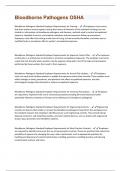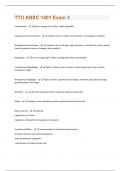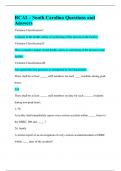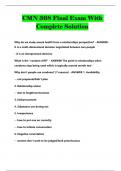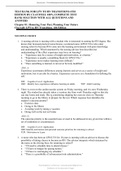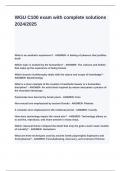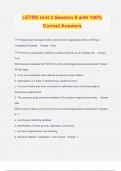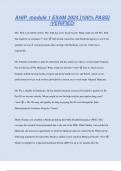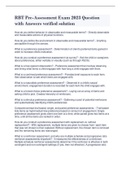Exam (elaborations)
Bloodborne Pathogens OSHA Questions and answers
- Course
- Institution
Bloodborne Pathogens Standard Employer Requirements for Training: - Employers must ensure that their workers receive regular training that covers all elements of the standard including, but not limited to: information on bloodborne pathogens and diseases, methods used to control occupational exp...
[Show more]
